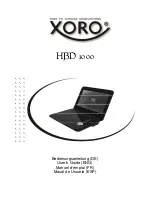
2)
FM STEREO Standard Signal
In FM broadcasting system, 100% modulation (Maximum system deviation) means 75kHz
deviation. For receiver test 100% and 30% (22.5KHz deviation) is most frequently used. These
values can be entered quickly using
(shift) keys. The necessary test conditions for the
most commonly used FM receiver test standards, IHF and JIS is provided in Table 3.1.
IHF
FM broad-
cast
receiver
test
methods
Mono
modulation 100%
deviation
75 kHz
stereo
L=R mode
including
the point
modulation
by
point signal
modulation 100%
9%
deviation
75 kHz
6.75 kHz
JIS
FM broad-
cast
receiver
test
methods
Mono
modulation 30%
The maximum system deviation is 75 kHz
deviation
22.5%
Stereo
(The maximum system deviation is 67.5 kHz.
equal to 90% of 75 kHz.)
Divide
Modulation
by main
channel
Modulation
by
sub channel
Modulatio
n
by point
signal
Total
R=L
Modulation 27%
0
10%
37%
Deviation
20.25 kHz 0
7.5 kHz 27.75 kHz
L or R
Modulation 13.5%
13.5%
10%
37%
Deviation 10,125 kHz 10.125 kHz
7.5 kHz 27.75 kHz
R=L
Modulation 0
27%
10%
37%
Deviation 0
20.25 kHz
7.5 kHz 27.75 kHz
Table 3.1. Standard modulation of
PeakTech
®
1100
3.3.4. Address Setting
3.3.4.1. Normal Mode
Increment or decrement the current address in steps of 1 or 10 using
,
keys.
☞
☞
☞
☞
When address value is increased or decreased by 1, the address may jump to some other
address. This is not due system problem but due to ‘Address Rotation Function’ of the
instrument. ( Refer to 3.3.4.3 )
When new address is entered, the instrument setting may change due to the stored data;
this is because the instrument is in ‘Sequential Recall Mode ‘. (Refer to 3.3.5.5)
-50-











































